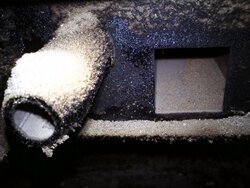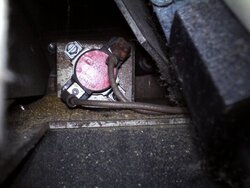Probably whipping a dead horse here but does anyone have any idea how I could hook up outside air for this stove?
Frankly I'm tired of heating inside air and sending it outside. There is no way that I can see to get outside air to the stove other than moving it outdoors which would seem to defeat the whole purpose of the stove.
Here is a diagram of the rear cover. The pipe going through the rear cover that the manual says if for the OAK terminates near the input side of the convection air blower and I can't see a place where the combustion air enters the burn pot. It seems to be coming from the ash pan.
If anyone has suggestions they would be appreciated greatly. If OAK is a no go well so be it, I can't afford another, better stove.
I've spent three or four hours trying to include an image of the rear panel without success. I've read the sticky about how to do it and still can't do it. I can put it on Flickr, Google pictures and another site but can't figure out how to load an image into this forum's picture album. All I have been able to do is provide a URL. Sorry.
Click rear panel to see an inlarged view.
Frankly I'm tired of heating inside air and sending it outside. There is no way that I can see to get outside air to the stove other than moving it outdoors which would seem to defeat the whole purpose of the stove.
Here is a diagram of the rear cover. The pipe going through the rear cover that the manual says if for the OAK terminates near the input side of the convection air blower and I can't see a place where the combustion air enters the burn pot. It seems to be coming from the ash pan.
If anyone has suggestions they would be appreciated greatly. If OAK is a no go well so be it, I can't afford another, better stove.
I've spent three or four hours trying to include an image of the rear panel without success. I've read the sticky about how to do it and still can't do it. I can put it on Flickr, Google pictures and another site but can't figure out how to load an image into this forum's picture album. All I have been able to do is provide a URL. Sorry.
Click rear panel to see an inlarged view.




